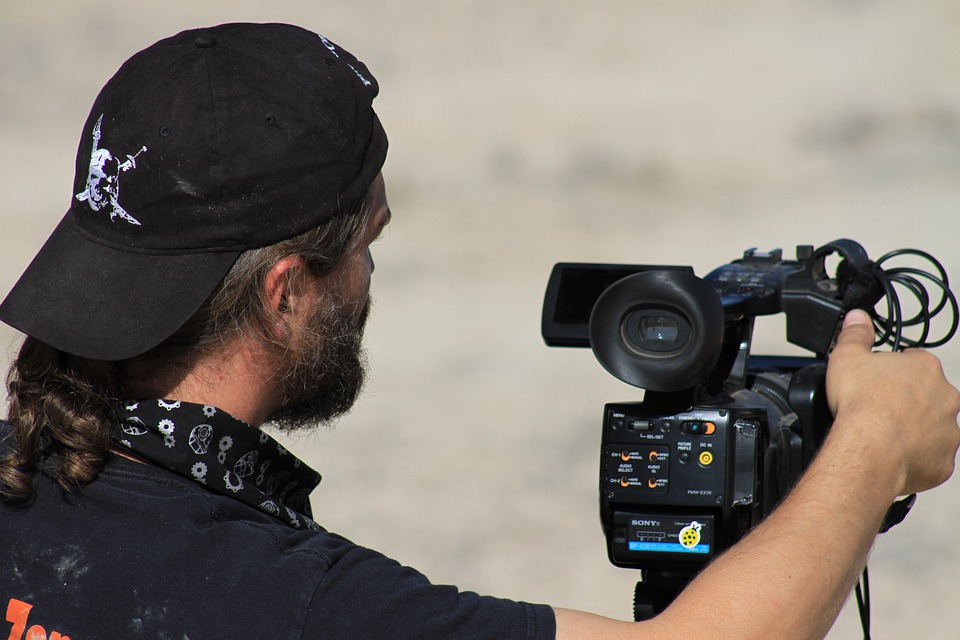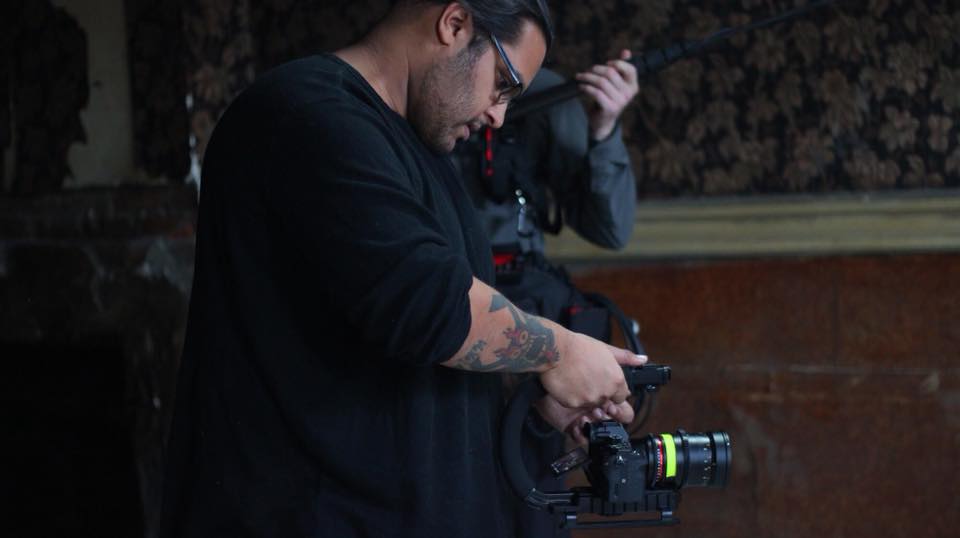Photos: Kiki Vassilakis
The trio behind the Troy-based independent film company Chromoscope Pictures are responsible for many of the Capital Region music scene’s most well-produced and attention-grabbing music videos. Childhood friends Zach Durocher, Nick Spadaro and Jamie Spaulding began their creative journey as teenagers, filming projects on a Sony handycam back in 2006. (“They were zombie movies and they were the worst,” Spadaro says.) Picking up technique, gear and ever climbing standards for high-quality production, they’ve gone on to produce visuals for local artists with major draw such as Wild Adriatic, Sawyer Fredericks, Sean Rowe and Girl Blue.
It was a career sparked by pure luck and good timing.
Spadaro cold-messaged drummer Mateo Vosganian of Wild Adriatic shortly after the band’s manager had called him to say the band didn’t have enough video content. The band hired the rag-tag trio to film a music video, released in early 2016, which got the attention of Sean Rowe and snowballed into a career.
The crew says working with the bands to achieve their creative vision has been a learning process that has allowed them to network within the region’s creative community.
“Film is probably the most collaborative art form, just in terms of the number of people it takes—and different talents it takes—to come together and create it,” Spadaro says. “It’s about realizing their vision. We feed off of the team effort, which is why our music videos are what they are, and it’s why people like to work with us. We genuinely like the music scene and want to support it. It’s really helpful having other artists to work with.”
It’s been a gratifying creative outlet for the company, which mainly survives off of corporate and wedding video projects. Corporate work pays for food, shelter and bills; music videos keep them from feeling stiff and monotonous.
“It’s a balance of being able to do something for yourself and for the business in order to make a living,” Durocher explains.
“There is a zero profit margin on any music video we do,” Spaulding says. “But it services us because it exercises our creativity. We’re helping out artists we respect. We don’t need to make money on it because it’s fulfilling other things and we do corporate work that does.”
“Obviously everybody wants to be Steven Spielberg but there’s a reality to this situation where you have to not have an ego about it,” Spadaro adds. “It can be exhausting doing what you don’t want to be doing half of the time and then doing what you really want to do the other half. Imposter syndrome can settle in. But that’s not the case. No one funds the arts as much as they should, so you have to take what you can get and make it happen no matter what. Everyone around here is doing shit they don’t want to be doing and not talking about it. Every video we do for someone, with whatever price we give them, is an investment in the music community.”
In return, the music community has come to invest in Chromoscope. They’re regarded as a film company that bands can trust to be creatively consistent and easy to communicate with.
“In the beginning of things that’s all we did for a while, we built a portfolio and a brand on that,” Durocher says of their music video work. “Then we got comfortable actually working in production on a somewhat regular basis, moving the gear ourselves, coming back to edit, the daily work that goes into the process of it all. It’s still building. It takes a lot of work.”
On top of their music video production, Chromoscope documents Wild Adriatic’s annual Rock Boat cruise and Summit festival. They’ve most recently embarked on a collaborative project with Synergia Dance Project, having worked with its parent company Troy Dance Factory over the past several years. With Synergia’s “Deep Blue Sea,” they’ll be producing polished choreography videos set to local music.
The team is also currently working on a short film. They have been in the writing process for the past several months, shelving the project again and again to prioritize client work.
They admit it has been frustrating to pursue an expensive art form that returns so little in profit, but have appreciated the shared creative push with the musicians they work with.
“Whenever we’re with Jimi [Woodul of Dark Honey] he’s like, ‘What the fuck are you guys doing? You keep talking about this, just do it already,’” Spaulding says.
“And we say the same to them, ‘When’s the album gonna be recorded, asshole?’ and he’s like, ‘You know what, we’ll get on it next week.’ We’re in an emotionally abusive relationship with Dark Honey; this is actually a cry for help,” Spadaro jokes.
With a small crew and brief windows of time between client work, Chromoscope isn’t willing to jump into a project without knowing it will live up to their standards. A finished project that goes out without 100 percent of their effort isn’t worth the release.
“We have an idea of where we want the short film to go and how we want it to look, in terms of comparing it to other short films across the nation,” Durocher says. “We want it to be at a certain level of quality, which has some hurdles. Yeah, you can get a bunch of friends in a room and take your iPhone and film something but are people going to enjoy watching it? There’s a whole other conversation about story and what matters most in filmmaking but production quality is a consideration.”
It’s something the film company takes very seriously. But having been born from DIY filmmaking, the Chromoscope team certainly isn’t turning their noses up at filmmakers with a lack of resources. It’s about recognizing a lack of genuine intention, skill and creativity.

Chromoscope Pictures behind the scenes of Northern Faces’ “Messin’ With Me”
“The stupidest advice we were ever given was, ‘It doesn’t have to be good, it just has to exist,’” Spadaro says. “If you’re putting it out there into the world, you’re saying, ‘Watch my art. Please engage in my narrative process.’ You have to have a level of respect for your audience. You can tell if something’s genuine, no matter what it’s shot on. It feels like a vanity thing. You can tell they were doing it for themselves rather than trying to create an art piece. If you’re not giving the audience an experience that allows them to become fully encompassed in your story, you’re doing them a disservice.”
Lately, they say, they’ve been focused on accountability. Each project is an opportunity to prove something to themselves and their collaborators, to be considerate of the time and energy paid by their subjects, crew and viewers.
“We’re pushing ourselves with every project,” Spadaro says. “At the end of it you should feel accomplished, but also that it’s not good enough. With every project you move into, you should be thinking, ‘What are we going to do next time? How will it be better? How are we going to elevate ourselves?’ Every project should be better than your last.”






Trackbacks/Pingbacks